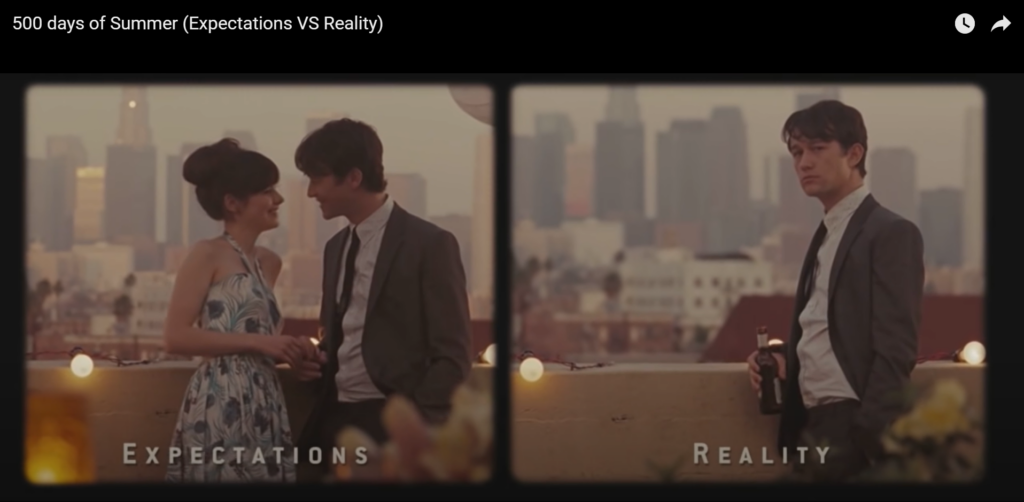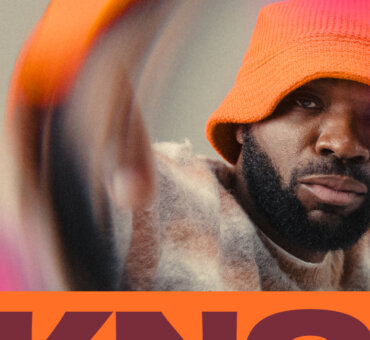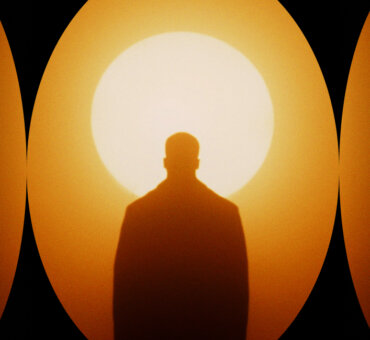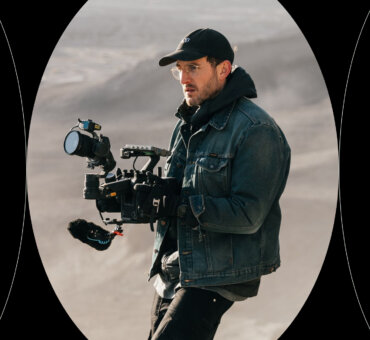More often than not, a great film is always accompanied by an iconic soundtrack—the type of music that has you singing it long after the film has finished and whenever you hear it, takes you right back to that story.
But how are some film soundtracks so good? Why do they work so well? Is it just luck? Let’s dive in and take a look at 10 iconic soundtracks, uncovering exactly what makes them perfect for their respective films.
Pulp Fiction (1994)
It’s no secret that Quentin Tarantino has mastered the use of music. In the booklet accompanying his soundtrack collection “The Tarantino Connection,” Quentin opens up about the process of scoring:
“I go through my record collection and just start playing songs, trying to find the personality of the movie, find the spirit of the movie . . . then, ‘boom,’ eventually I’ll hit one, two, or three songs, or one song in particular, ‘Oh, this will be a great opening credit song.’”
This process comes to life in the opening credits of Pulp Fiction, with a radio station “fuzz effect” switching from the energetic guitar riff of Dick Dale’s 1962 cover “Misirlou” into Kool & the Gang’s “Jungle Boogie”—almost as if Tarantino were listening himself. It foreshadows what’s to come with the film’s somewhat scrapbook nature that jumps from narrative to narrative.
Reflecting on his music choices here, Quentin said that “having ‘Misirlou’ as your opening credit, it’s just so intense . . . it just says you’re watching an epic, you’re watching a big, ol’ movie . . . It just throws down a gauntlet that the movie now has to live up to.”
Other standout moments include the classic Mia and Vincent dance scene. As one YouTube comment succinctly summarizes, it’s “one of the most iconic scenes in cinema” and “it was fueled with his song”—referring to Chuck Berry’s “You Never Can Tell.” It’s as if this track was made for this scene.
Baby Driver (2017)
Edgar Wright has always had a talent for picking the perfect soundtrack for his films, and Baby Driver is perhaps the best example. The music underlying the film is integral to its success. As Wright points out, the main character, Baby, “can’t exist without music playing.” To block out his tinnitus, Baby constantly blasts 1970s hits right from the opening scene.
“Bellbottoms” by The Jon Spencer Blues Explosion, immediately sets the tone, guaranteeing a wild, crazy ride. The music also informs what’s happening on-screen throughout, with the edit often being cut to the music. Wright selected tracks that “had some interesting things happening structure-wise—tempo changes, breakdowns, loud and quiet bits.” Whether it’s a tense, slow moment, or a high-octane gunfight and car chase sequence, Queen’s “Brighton Rock” works flawlessly for the film’s final act.
With the use of diegetic editing (the character on screen is hearing the same song we’re hearing), we’re also inside Baby’s head. Like the wall-to-wall soundtracking from start to finish, Baby can’t stop moving, and each song reveals a different layer to him. As Wright summarized in Rolling Stone, he’s essentially created a “diegetic action-musical.”
Dirty Dancing (1987)
For writer-producer, Eleanor Bergstein, the hunt for the film’s final song had been a long one, but in “(I’ve Had) The Time of My Life,” she found the icing on the cake, cementing the film’s iconic status—“we just got up and danced until it was over and said, that’s it!” she recalls. Her intuition was right. The track left audiences euphoric. As the indie romance became a box office hit, the song raced up the charts, becoming a global sensation.
It was this perfect song choice that ensured the film endures to this day. How many weddings and celebrations have you heard it at? How many times have you seen people attempting (rather badly) that iconic lift? The two go hand in hand.
Dirty Dancing includes many other hits that manage to capture both the period the film is set in and the time it was released. Maurice Williams & the Zodiacs’ “Stay” is classic 60s and fits this simmering scene perfectly . . .
Meanwhile, the Patrick Swayze and Wendy Fraser collaboration “She’s Like the Wind” is more 1980s soft-rock glory. Despite decades between different tracks, the balance of the eras, and different songs, all have their moments.
Guardians of the Galaxy Vol 1 (2014)
Nowadays, it’s not uncommon to see large production studios such as Marvel and Disney partnering with iconic artists like Kendrick Lamar, Rihanna, Lady Gaga, and Beyonce, to both curate and create their own movie soundtracks from scratch (A Star is Born, Black Panther, and Wakanda Forever are all great examples of this). With the first Guardians, they let director James Gunn utilize pre-existing tracks. It turned out to be a genius move.
With diegetic editing, we hear what Peter Quill (Star-Lord) hears every time he presses play on the old Walkman, giving us an idea of who he is and why this playlist matters. Star-Lord listens exclusively to 1970s power pop because that’s the playlist his mom created for him. It connects Peter to her. And, as the only human in a very sci-fi film, the Guardians of the Galaxy soundtrack tethered the audience to Earth, reminding them that this was still a human story, despite the host of new alien creatures being introduced to Marvel’s universe for the first time.
How could you not fall in love with Star-Lord with an intro like that? Audiences loved this soundtrack. It breathed new life into many old hits, introducing them to younger generations as if they were new while peaking at number one on three separate Billboard charts.
500 Days of Summer (2009)
This hit indie rom-com has a killer indie soundtrack accompanying it. As we navigate Tom and Summer’s ultimately doomed romance through the seasons, each song gives us a clue as to where they’re at in their relationship, reflecting the character’s feelings and emotions.
In the opening credits scene, “Us” by Regina Spektor reflects a child-like innocence, paired well with a montage of images showing the two characters as they grow up. They’re young and unaware of the heartbreak to come later in life.
The film’s soundtrack expertly documents the highs and lows of a relationship. Could there be a more fitting song to represent how Tom feels at that moment than Hall and Oates’ “You Make My Dreams”? One YouTube comment summarizes, “This captures the thrill of falling in love/lust in a way few movies have pulled off. It’s a silly floating high when you completely fall for someone.”
Directly juxtaposed with this is the raw and real scene where we see Tom’s reality play out side-by-side with his expectations. Tom thought he was the hero and the main character in this story, but that starts to fall apart, all set to a slower, more heartbreaking Regina Spektor song in “Hero.”

The Breakfast Club (1985)
Ever heard of the “Brat Pack”? The Breakfast Club is a classic 80s high school film, often credited with influencing many teen movies that followed it. Part of its success lies in its brilliant soundtrack—the choice of songs really tuned in to the culture of the time.
The standout hit was of course, “Don’t You (Forget About Me)” by Simple Minds. This song wasn’t just a big hit in the film, but one of the biggest songs of the entire decade (and that’s quite a feat, given this is the 80s). The track booms out over the opening credits, as well as the ending scenes, while the instrumental is utilized throughout. It’s a movie soundtrack that perfectly captures the feel of the film and its time—this was what it meant to grow up as a teenager in 80’s America. To this day, it evokes powerful feelings of nostalgia for viewers. Trawling the YouTube comments section is a testament to that.
“I am proud to be a child of the 80s, we had the best music, the best movies, and the best of times.”
“A great song without an expiration date. Still feels as powerful and moving as it did in 1985.”
Garden State (2004)
Read the premise for this film, and you immediately have an idea of the soundtrack. Garden State follows the story of a young man making his way home to New Jersey for his mother’s funeral. Like 500 Days of Summer, the soundtrack delivers a lot on the emotional front, elevating the storytelling, setting the tone, and letting us know how the characters feel.
In the opening scenes, we immediately feel what the character’s feeling (or rather, what he’s not feeling) with the melancholy, doomsday vibes of “Don’t Panic” by Coldplay fading in on the news that protagonist Andrew’s mother has died.
“Only Living Boy in New York” by Simon & Garfunkel soundtracks an emotional (somewhat cheesy) scene where Andrew and his friends are screaming into an abyss. This song about loneliness with a hopeful, upbeat vibe just . . . works. How did they know that would work? Well, as Zach Braff (writer, director, and star) revealed, the soundtrack was basically “a mix CD with all of the music that I felt was scoring my life at the time I was writing the screenplay.” The film is autobiographical. Zach’s life experience guided this personal, handpicked soundtrack that gives the film real heart.
The Graduate (1967)
The Graduate was one of the earliest films to use its soundtrack to such great effect. Director Mike Nichols played with the music of New York folk-rock duo Simon & Garfunkel, using their tracks to underscore and comment on the emotional tone of various scenes throughout. In the opening title sequence, the iconic “Sound of Silence” gives us a real sense of how the protagonist, Benjamin, is drifting on a conveyor belt, without much meaning or sense of purpose. The melancholy song encapsulates his feeling of dejection.
The film also gave birth to an iconic song in “Mrs. Robinson” (named after one of the main characters). The catchy chorus and acoustic guitar chords that soundtrack the film’s headlong, frenetic final act were an instant hit. The soundtrack album spent nine weeks at the top of the charts, selling two million copies and even collecting a Grammy Award as best original score in 1969.
O Brother, Where Art Thou? (2000)
Winning three Grammy Awards and hitting no.1 on the Billboard 200, the soundtrack for O Brother, Where Art Thou? is undoubtedly iconic. Set in rural Mississippi during the 1930s (aka the Great Depression), the Coen Brothers wanted a soundtrack that captured that era, reflecting the setting and enveloping the audience.
In the film’s opening scenes, we’re transported to that world. Before the title is even on screen, we hear laborers singing James Carter’s chain-gang-inspired song “Po Lazarus,” before proceeding straight into “Big Rock Candy Mountain.” Originally recorded by Harry McClintock in 1928, it’s a folk song about a hobo’s idea of paradise and really places the film on the timeline.
The Coen Brothers did their homework on this one. Before even writing the screenplay, they’d commissioned producer T Bone Burnett to assemble a massive playlist of old-time music from the era, which they then used as writing prompts. From hillbilly plaints and gospel numbers to labor songs and protestant hymns, it’s clear that this soundtrack was the cornerstone that shaped everything else about the film.
Once Upon a Time in Hollywood (2019)
Similarly to how the Coen Brothers expertly soundtracked O Brother Where Art Thou?, placing it firmly in 1930s rural Mississippi, Quentin Tarantino appears on the list for the second time with his evocative playlist soundtracking Once Upon a Time in Hollywood. A self-confessed cinephile, this film is Tarantino’s love letter to 1960’s Hollywood, and every song featured does a masterful job of transporting us back to that magical period—the golden age of Hollywood.
The soundtrack reflects how 1969 Los Angeles was a culture in flux, dominated by music. Rock music was shooting off in all kinds of directions, ricocheting between sunny California pop sounds and darker, dissatisfied strains that propelled countercultural movements throughout the US. Check out these scenes with Margot Robbie dancing to “Good Thing” by Paul Revere & The Raiders, perfectly encapsulating her character’s carefree joy and love of dancing:
As a child growing up in LA, Tarantino listened to a lot of KHJ Boss Radio, and he used that throughout. He “wanted KHJ to be the tapestry of the sound of this movie,” music supervisor Mary Ramos told Time. It works like a time machine, adding another layer of realism to the film, because these songs are exactly the songs our characters would be listening to as they go about their LA lives. Nothing beats a bit of Cliff Booth racing through the streets of LA.
Final thoughts
So, what makes a soundtrack truly iconic? More often than not, it’s a feeling; a vibe that we almost can’t describe—the music selected for the visuals works so well, it’s like it was made for this exact scene in this exact film. Those feelings and moments gifted to the audience stay with them forever, cementing the film and soundtrack in popular culture, and elevating it to iconic status.
The soundtracks featured throughout these films are storytelling tools. They inform the audience about who the characters are and how they feel. Other times, they set the tone and pacing of a scene, perhaps even directly informing how it’s edited, or placing a film in a certain setting at a certain point in history.
The importance of selecting the right soundtrack for your films can’t be underestimated. Get it right, and it can be pivotal to success. Whether you’re looking to clear a major hit or introduce an under-the-radar indie artist to your audience for the first time, Musicbed can deliver the same value, emotion, and uniqueness to your project.




















































































